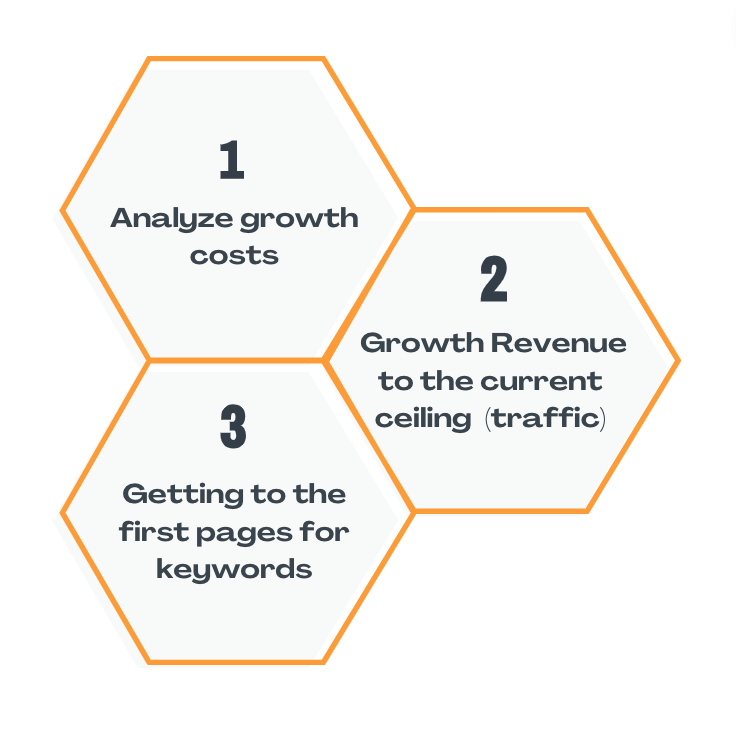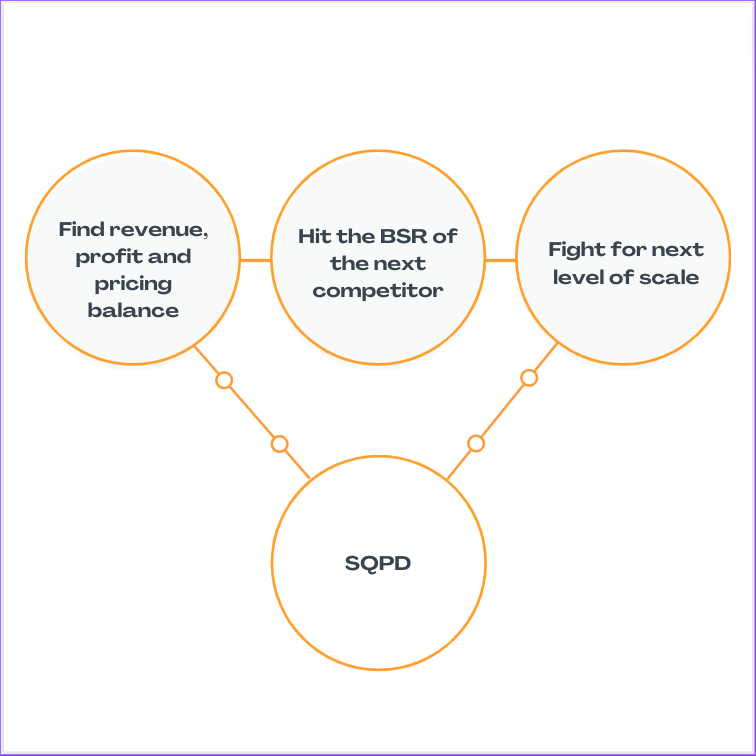A Short 4-Step Guide to Becoming a Top Niche Player on Amazon
Ever wondered how your product's journey from launch to peak popularity, and sometimes decline, works on Amazon?
Well, you're in the right place!
We'll walk you through each stage and show you how to detect why your Amazon business struggles to scale.
In this article we will outline the five stages of the Amazon Product Life Cycle, detailing the purpose of each stage, the key performance indicators (KPIs) to monitor, and the signs that indicate readiness to progress to the next stage.
So, whether you're a newbie or a seasoned seller, this guide is your ticket to understanding your product's life cycle and making the most of it. Let's dive in!
1. Pre-Launch
The first step is the pre-launch which is the initial phase when a new product is introduced to the market or when a product is reintroduced after being out of stock.
Here you need to discover how strong your organic representation is, analyze initial conversions, and start to see some organic sales.
What data do I need to examine?
The key KPIs to monitor during the Pre-Launch stage are conversion rates and organic sales.
Conversion rates measure how many people visit your page and eventually make a purchase. Organic sales indicate initial approval from the Amazon algorithm.
In a nutshell, you need to spend 100+ clicks for every important keyword to understand the conversion rate.
Plus, as far as budgeting is concerned, you need to take into account that on average. every click on Amazon is from $1 - $3 (depending on the category), so for every important keyword, you should expect to spend at least $100 or more.
To understand your standing, you can employ trackers like Helium10 or some generic sales reports.
When can I move forward?
You can move to the Launch stage once you start seeing some organic sales and your conversion rates are comparable to the market average.
When that happens, it means you get initial approval from the Amazon algorithm. The biggest advantage of Amazon compared to other platforms is that every sale generated with PPC can help you grow organically.
2. Launch
The Launch stage is about understanding if your product fits the market.
Why so?
As many stories have shown, some of your products will have a higher conversion rate in one segment and a lower conversion rate in another. That’s why it’s important for you to keep a close eye on the goings of your products in the marketplace.
This involves analyzing your conversions which is also naked with first PPC sales and organic sales, and a chance to optimize (e.g., positioning, pricing, or images) your listings according to the data.
What are the KPIs to follow in that step?
At this stage, you will need to examine several aspects that can influence your next steps, these are: conversion rates, organic sales, and Cost Per Order (CPO).
CPO is the cost you incur to get any order, whether it's through PPC or not.
You can calculate your CPO by dividing your total PPC spend by the number of units sold. This can help you understand if you're comfortable with the cost and if you can scale in a particular segment.
What indicates that I’m doing great at this stage?
When you will start getting more organic sales and your CPO is at a level that you will feel secure. Most importantly: the more strategically chosen keywords you use - the better ranking you can achieve, especially first page ranking for key keywords.

3. Scale (SQPD)
The scale step is about finding the balance between how many units you need to generate on PPC for your conquered segments and how many you get organically.
The problem that many face at this stage is when they stop doing PPC and start noticing when their organic sales start slowing down steadily.
In that sense, your goal here is to stabilize your profit and bring more inventory into the marketplace.

Starting conquering your niche
Depending on your business size and cash flow, you can choose to start with small volume niches where your conversion is good enough.
You can put aggressive budgets on these segments and aim to become top players. As you conquer each small segment, you can move on to the next one.
What data to track?
When it comes to the Amazon marketplace - and looking for venues to scale, it always relates to the fact of claiming the market share.
So, let’s say your BSR is 3000 and your competitor’s BSR is 2500.
To overpower your competitors, you can use tools like Brand Analytics and SQP (Search Query Performance) reports to understand how you're doing and others by exact keyword. If you find the data too difficult to master, do feel open to consulting Amazon PPC and data specialists.
Examining what your competitors do helps a lot to decide what you need to optimize on your own end.
Perhaps your competitor put an effort into collecting more reviews? Lowered pricing? Then, in order to fight and claim the market share you need to do more than your key competitor.
But how does one understand if they are doing fine at the scaling stage?
In a nutshell, as you reach the first page for your chosen segments, you should have an improving BSR number and start to see more organic sales increasing your profit. When you succeed in these objectives, you can move to the following stage.

Every line in this spaghetti chart is an ASIN of a specific product niche. From organic position no. 1 down to N+. You can see here that the further you go, your standing becomes more volatile. That's why becoming a top player is essential here because it can ensure that your stand in this list does not suffer volatility and is capable of dictating the game's rules - keeping your competitors downwards.
4. Leader
Let’s say that at this stage you are the leader of your sub/niche, your work isn’t done here. And here you need to do your best not to get anyone up front of you.
As always, you need to analyze your data; thus, during this stage of your product cycle, you need to pay close attention to your market share and organic views.
At this stage, the goal is not to move to the next stage but to maintain your position as a top player in your sub-niche. This might involve being more aggressive with advertising to keep your position.
The Takeaway
Throughout these stages, the emphasis is on adapting strategies based on performance metrics and market dynamics. The journey from product launch to becoming a top niche player on Amazon requires perseverance, strategic planning, and the ability to adapt swiftly to market changes.
Remember, the key to success lies in not just reaching the top but in maintaining your position through continuous innovation and market understanding.
Oleg Zaidiner, CEO and Co-founder of aNavigator, leverages his Amazon algorithm expertise and computer science background to propel client growth and data-driven solutions. Leading a skilled team, he's elevated aNavigator in the competitive market. Oleg envisions an AI-driven shift in e-commerce, focusing on personalization and a diverse market. His knack for simplifying complex solutions accelerates brand progress.

